| |
Pages 1 |
2 |
3 |
4 |
5 |
6 |
7 |
8 |
9 |
10 |
11 |
12 |
13 |
14 |
15 |
16 |
17 |
18 |
19 |
20 |
21 |
22 |
23 |
24 |
25 |
26 |
27 |
28 |
29 |
30 |
31 |
32 |
33 |
34 |
35 |
36 |
37 |
38 |
39 |
40 |
41 |
42 |
43 |
44 |
45 |
46 |
47 |
48 |
49 |
50 |
51 |
52 |
53 |
54 |
55 |
56 |
57 |
58 |
59 |
60 |
61 |
62 |
63 |
64
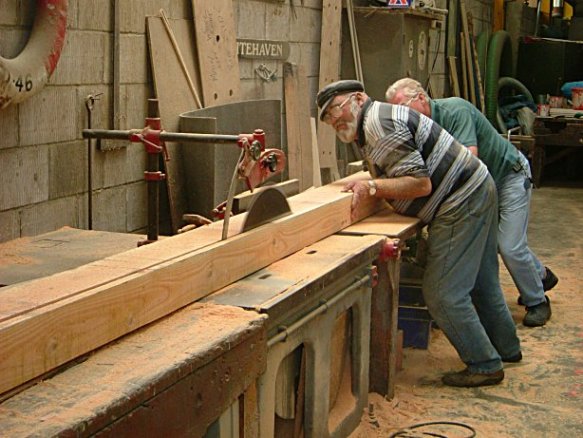
- Above:
One of the spokes being cut to the required taper to match
- the sockets on the hub and shroud
ends. Each spoke is cut to a finished
- length of 22 feet 6 and 3/8 of an
inch as it would have been by the Victorians.
-
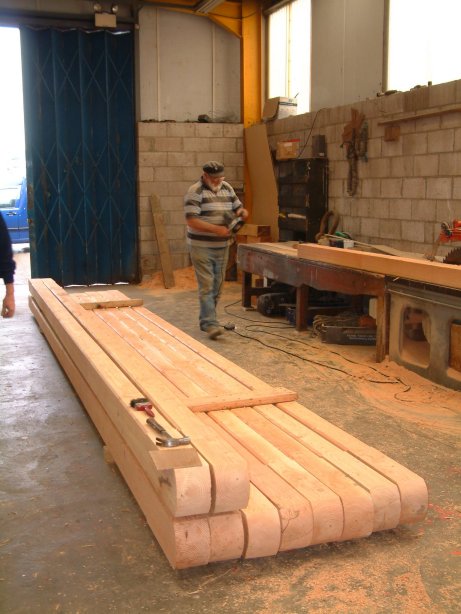
-
- Above:
A pile of now completed spokes. All forty
were
- made in just over one week by the
Master Carpenters.
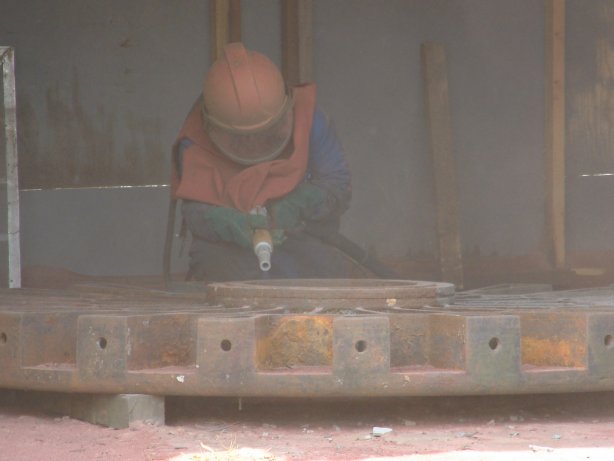
- Above:
Darren Hadley sandblasting one of the
massive seven foot diameter hubs.
- Roman numerals were found on each
of the twenty spoke sockets.
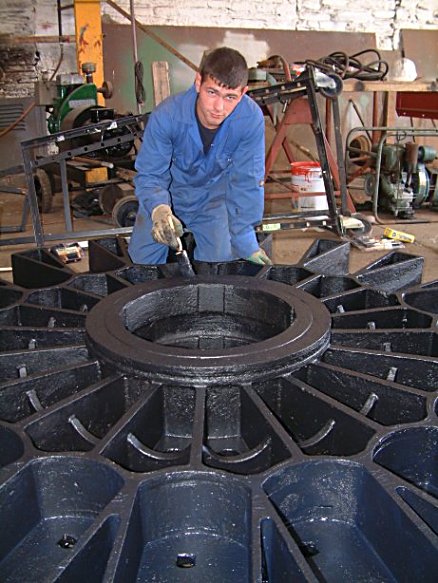
- Above:
Ramsey Shipyard's Craig Tinkler painting the hubs.

- Above:
The finished item. The hubs wouldn't have looked
- any better when they had
originally been made.
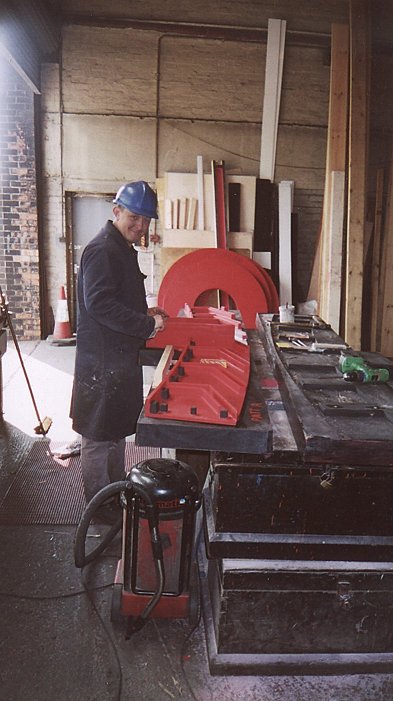
-
- Above:
Gareth Hughes, pattern maker at the
Progress Foundry in Stoke
-
- puts the finishing touches to the
wooden patterns for the
-
- reproduction of the shroud
sections of the wheel.
NEXT PAGE |
|